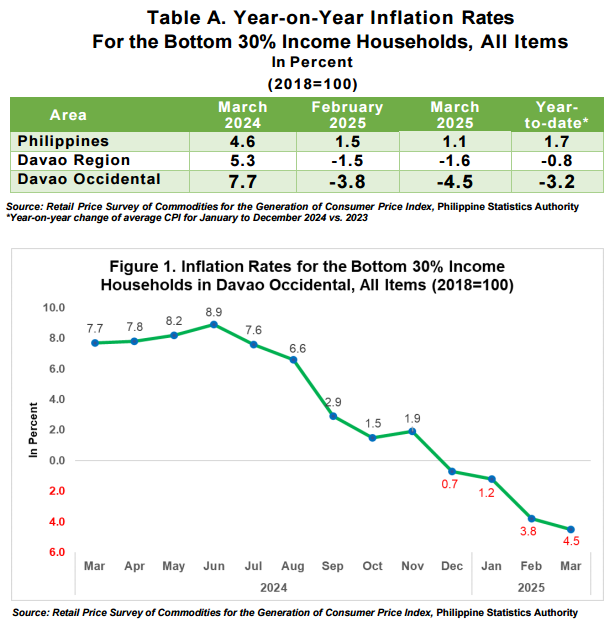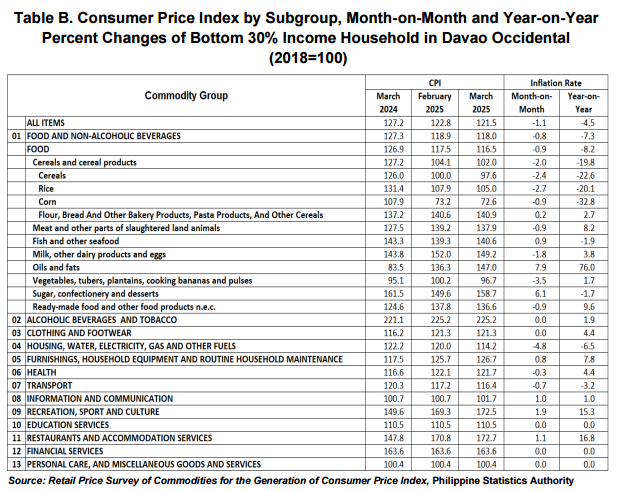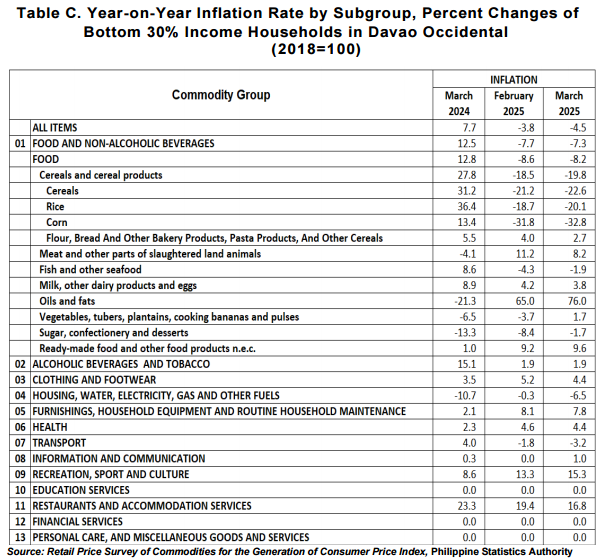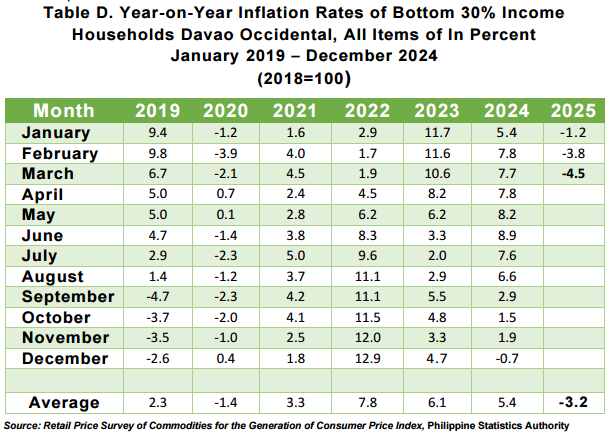
The Davao Occidental headline inflation rate for the bottom 30% income households declined further to negative 4.5 percent in March 2025 from negative 3.8 percent in February 2025. In March 2024, the inflation rate was higher at 7.7 percent.(Table A and Figure 1)
The drivers of the downward trend of the overall inflation for this income group in March 2025 was the slower year-on-year growth of the following commodity groups;
a. Restaurant and accommodation services, from 19.4 percent to 16.8 percent;
b. Furnishing, household equipment and routine household maintenance, from 8.1 percent to 7.8 percent;
c. Health, from 4.6 percent to 4.4 percent;
d. Clothing and footwear, from 5.2 percent to 4.4 percent;
e. Housing, water, electricity, gas and other fuels; from negative 0.3 percent to negative 6.5 percent; and
f. Transport, from negative 1.8 percent to negative 3.2 percent.
In contrast, higher annual growth rates were noticed in the following commodity groups;
a. Recreation, sport and culture, from 13.3 percent to 15.3 percent;
b. Information and communication, from 0.0 percent to 1.0 percent; and
c. Food and non-alcoholic beverages from negative 7.7 percent to negative 7.3 percent.
The indices of the rest of the commodity groups retained their respective previous month’s annual rates. (Tables B)

Food inflation for the bottom 30% income households at the provincial level slightly increased to negative 8.2 percent in March 2025 from negative 8.6 percent in February 2025. In March 2024, the inflation rate was higher at 12.8 percent.
The acceleration of food inflation in March 2025 of this income group were contributed of the following food groups;
a. Oils and fats, from 65.0 percent to 76.0 percent;
b. Ready-made food and other food products n.e.c., from 9.2 percent to 9.6 percent;
c. Vegetables, tubers, plantains, cooking bananas and pulses from negative 3.7 percent to 1.7 percent;
d. Sugar, confectionery and desserts from negative 8.4 percent to negative 1.7 percent; and
e. Fish and other seafood, from negative 4.3 percent to negative 1.9 percent;
In contrast, compared with their previous month’s inflation rates, lower annual growth rate was observed in the following food groups;
a. Milk, other dairy products and eggs, from 4.2 percent to 3.8 percent;
b. Meat and other parts of slaughtered land animals from 11.2 percent to 8.2 percent;
c. Rice from negative 18.7 percent to negative 20.1 percent; and
d. Corn from negative 31.8 percent to negative 32.8 percent. (Table C)


Note: CPIs and inflation rates for the bottom 30% income households by region and province are posted at the PSA OpenSTAT portal at https://openstat.psa.gov.ph/PXWeb/pxweb/en/DB/DB__2M__PI__BIH__2018/?tablelist=true .
APPROVED FOR RELEASE:
JESSIE A. MADULIN
Chief Statistical Specialist
